10 Nature-Themed Books to Give Kids of All Ages
This holiday season, provide the budding environmentalist in your life with literary nourishment
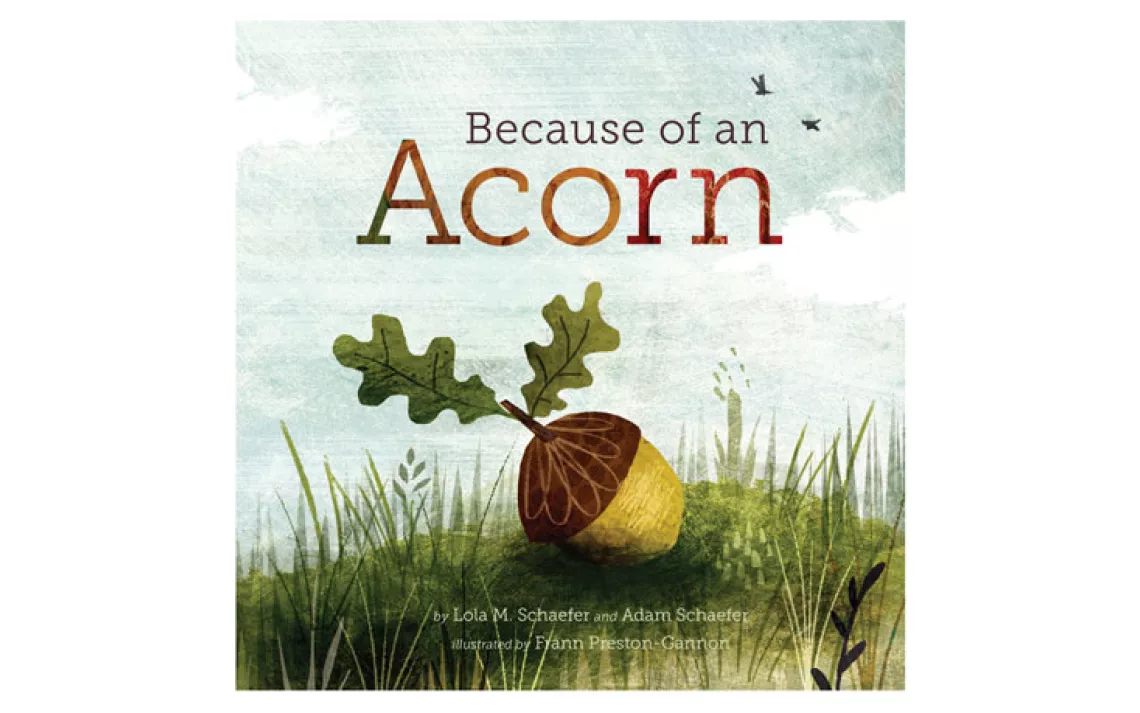
Because of an Acorn | Photo courtesy of Chronicle
One of the most sustainable gifts a kid can receive is a book—or better yet, a whole stack of them. A child will read beloved stories over and over, and they’ll become part of his or her ever-expanding library of favorites. Not-so-beloved books can be passed on to another child.
There’s a slew of beautiful, nature-themed picture books available right now for kids of all ages. For this holiday season, we’ve selected a favorite plus a runner-up for each age group so you can give the child in your life one (or two!) books that will introduce the marvels of life on our endangered planet. And, if you’re in the habit of reading aloud at bedtime, you might learn something, too.
Because of an Acorn by Lola M. Schaefer and Adam Schaefer, illustrated by Frann Preston-Gannon. It’s not easy to explain to a tiny naturalist what an ecosystem is or how it works. But this beautifully illustrated little tome, accentuated with clever cutouts, will show her how an acorn leads to a forest—and along the way, supports a whole host of flora and fauna great and small. For a child eager to learn more, there are explanations at the back about who eats what in this sort of ecological community. Some of the proceeds from the sale of this book support the work of the NRDC. Chronicle, ages 3–6, $17
Second pick: Midnight Creatures: A Pop-Up Shadow Search by Helen Friel. This pop-up book is a feast for the eyes at bedtime, when little tykes can use their flashlights to cast the shadows of lemurs, frogs, bats, and squid onto the walls of their rooms. Laurence King, ages 3–6, $25
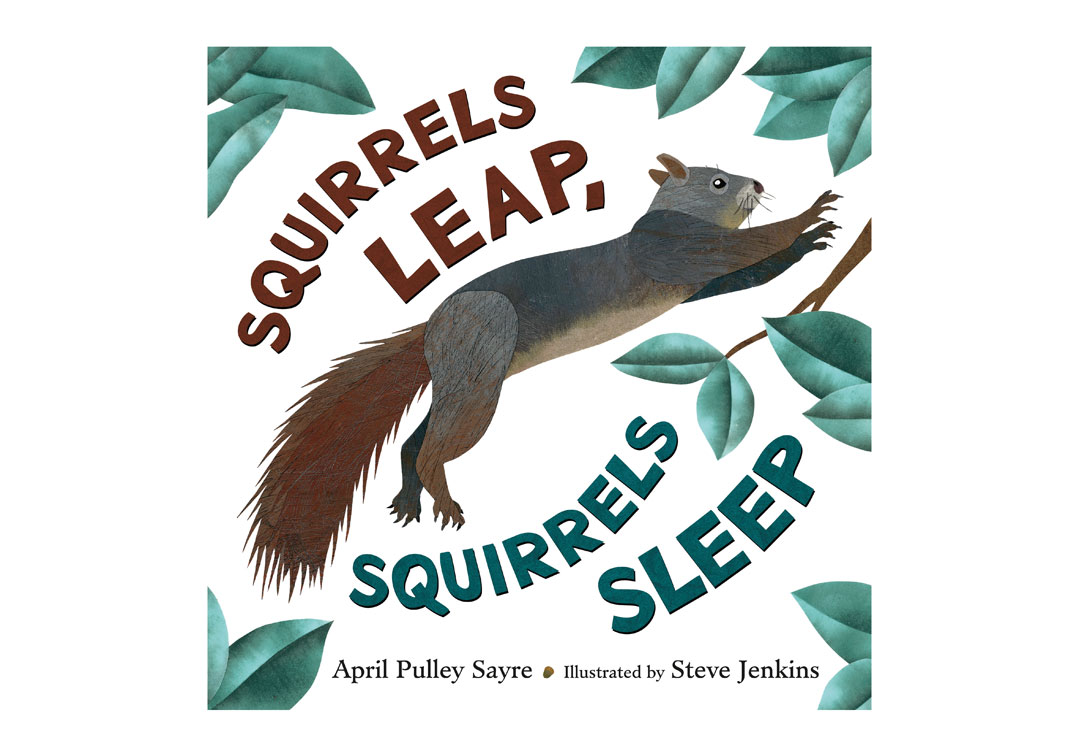
Squirrels Leap, Squirrels Sleep | Photo Courtesy of Henry Holt
Squirrels Leap, Squirrels Sleep by April Pulley Sayre, illustrated by Steve Jenkins. This is a deceptively simple picture book by an acclaimed nature writer and one of the foremost creature illustrators around. The book introduces kids not only to the frenetic daily activities of several kinds of squirrels, but also uncovers the not-always-obvious usefulness of these backyard pests (hint: it has to do with planting future trees). Several pages of excellent back matter provide in-depth information for young nature observers about all things squirrel: their ancestry, their preferred habitats, and their various ingenious survival methods, as well as suggestions for how kids can help these animals improve the environment we share. Henry Holt, ages 4–8, $18
Second pick: Wild Animals of the North by Dieter Braun. A gorgeously rendered and comprehensive compendium of the many animal species found in the Northern Hemisphere, from the ordinary (the hedgehog) to the extraordinary (the manul). Nobrow Flying Eye, ages 5+ ,$35
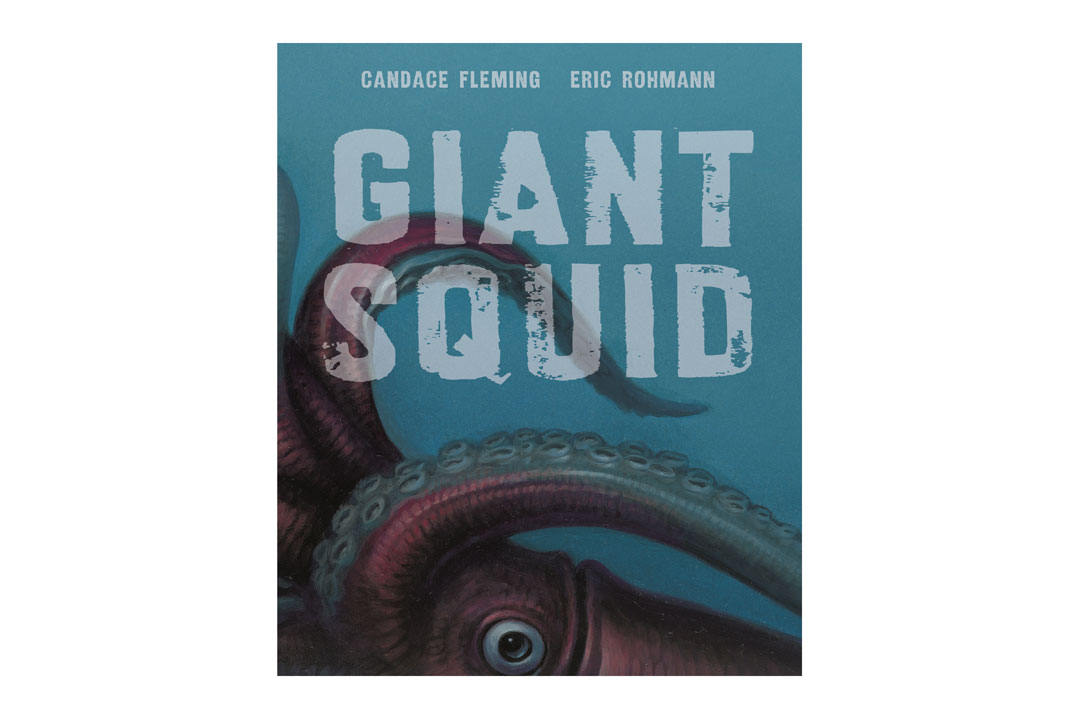
Giant Squid | Photo courtesy of Roaring Brook
Giant Squid by Candace Fleming, illustrated by Eric Rohmann. For generations, the elusive giant squid (Architeuthis dux) was the stuff of legend, giving rise to stories about mermen and kraken and other monsters of the deep. Even now, scientists’ knowledge of these creatures is informed mostly by dead specimens (or bits and pieces of specimens) that wash up on beaches around the world. For the budding marine biologist in your household, this boldly illustrated prose poem touches on what those scientists have learned—and what mysteries remain to be discovered—about these astonishing, 40-foot ocean dwellers. Roaring Brook, ages 6–10, $19
Second pick: Prairie Dog Song: The Key to Saving North America’s Grasslands by Susan L. Roth and Cindy Trumbore. Animals aren’t the only ones whose existence is threatened on our planet, and in this book, wee conservationists learn the story of how America’s wild grasslands, once mostly lost, are now on the mend. Lee & Low, ages 6–11, $19
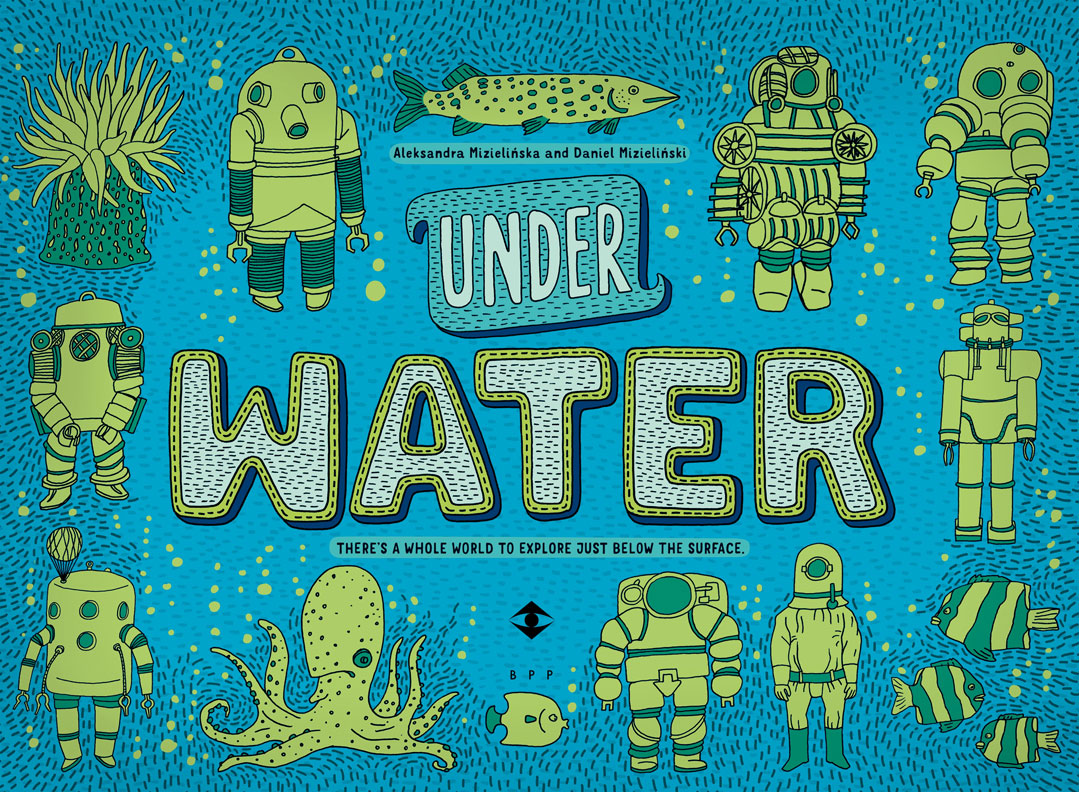
Under Water, Under Earth | Photo courtesy of Big Picture Press
Under Water, Under Earth by Aleksandra and Daniel Mizielínska. This large double book—one side takes young readers deep and deeper underground, and then they can flip to explore the fathoms of the sea—is for kids whose biggest thrill is to categorize. Think Richard Scarry’s intensely detailed cityscapes, only for the natural world (and where humans and nature intersect), and you’ll begin to have an idea of the extremely satisfying illustrated and labeled cross-sections that each page spread provides. Toward the top of Earth’s surface, “An Anthill” presents life cycles and various species and important facts about insect communities in the family Formicidae, while thousands of feet beneath the waves, “Anglerfish and Lantern Fish” shows that even in places we cannot easily see, there are creatures floating about, comprising part of an ecosystem that’s larger and more diverse than we might ever have imagined. Big Picture Press, ages 7+, $35
Second pick: Explore a Shark by David George Gordon, illustrated by Davide Bonadonna & Christian Kitzmüller. Children fascinated by these ancient predators of the sea can discover what goes on inside a great white shark, layer by layer, with each turn of the page. Silver Dolphin, ages 8+, $22
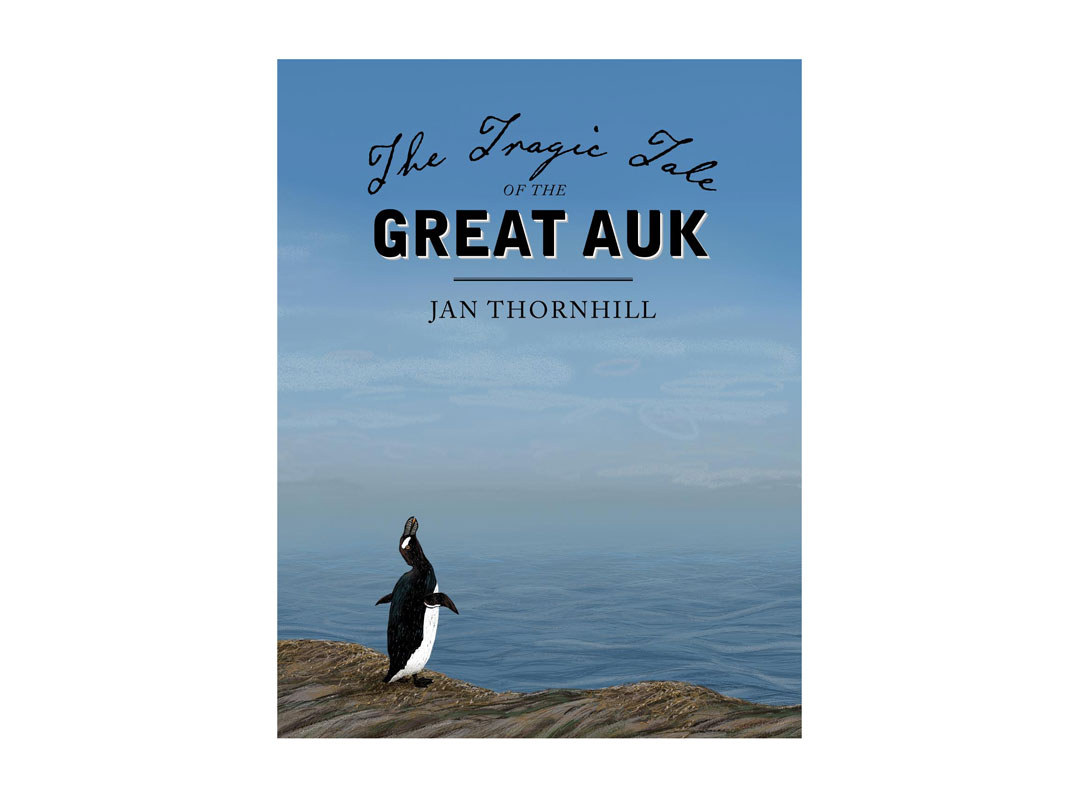
The Tragic Tale of the Great Auk | Photo courtesy of Groundwood
The Tragic Tale of the Great Auk by Jan Thornhill. The title of this book promises a sad story, and it certainly delivers in its recounting of how one bird, the northern “penguin” (it wasn’t in fact related to penguins but was the first bird to be called one) went extinct. Middle-schoolers interested in cause and effect, and also in the impending demise of many of our planet’s other threatened species, will have a lot to ponder as they read about mankind’s detrimental tendencies to eat members of this species, and also to collect their eggs. Kids will also consider the physical disadvantages nature conferred on these unfortunate birds—wings and legs too short for flying or walking, and absolutely zero defenses against predators. But is it all doom and gloom? Thornhill provides some surprising answers, showing how the extinction of this odd animal led to some positive outcomes, including the birth of the modern-day conservation movement. Groundwood, ages 10+, $19
Second pick: Find the Constellations by H.A. Rey. Every child should be encouraged to look skyward now and again, and this classic introduction to astronomy, updated with current information about stars and planets, is the perfect starting guide to the vast universe that surrounds us. Houghton Mifflin Harcourt, ages 10+, special edition reprint $20
 The Magazine of The Sierra Club
The Magazine of The Sierra Club



